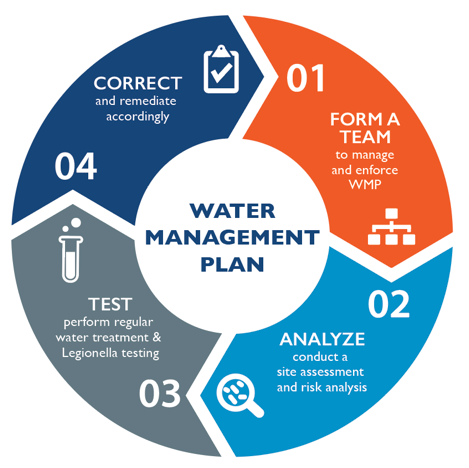
There are no vaccines available to prevent the spread of Legionnaires’ disease, the Centers for Disease Control and Prevention (CDC) states.
Instead, this illness — which is caused by the growth and spread of Legionella bacteria — must be managed with preventative measures.
Prevention of Legionella growth is an imperative consideration for all building engineers — and especially for those who work in long term care facilities. Long term care facilities typically are home to individuals who require medical or personal care.
Currently, over 4 million Americans live in long term care facilities, and it’s estimated that between 1 to 3 million serious infections occur in these facilities each year. Those residing in long term care facilities may be at an increased risk of catching illnesses due to their age demographic and living proximity to other residents.
In this article, we’re discussing the top ways to help prevent a Legionella outbreak in your long term care facility. Legionella prevention is key to the safety of your building and the quality of life of your residents.
Identifying the signs and symptoms of Legionnaires’ disease
Legionnaires’ disease typically boasts similar symptoms as pneumonia and other lung infections. In addition, the illness is characterized by other warning signs, including:
- Cough
- Shortness of breath
- Fever
- Muscle aches or headache
- Diarrhea
- Nausea
The onset of symptoms associated with Legionella exposure usually begins around 2 to 10 days after contact with the bacteria. If you notice any of these symptoms, be sure to contact your doctor.
This is especially important if you’ve been staying in a long term care facility where you may have contracted the illness. By notifying your doctor and identifying the source of the bacterial exposure, you can help to safeguard yourself and other facility dwellers from further contact with the bacteria.

Stagnant water and Legionella
Certain risks increase the likelihood of Legionella exposure. For example, stagnant water in long term care facility plumbing systems can put individuals in harm's way. Legionnaires’ disease and other waterborne illnesses may spread through water in long term care facilities.
To decrease the chances of developing an illness from a waterborne pathogen, it’s necessary to invest in water management systems. Legionella prevention may include the elimination of stagnant water through auto-drain shower systems.
Legionella prevention: Water management systems
When water systems aren’t maintained well or updated over the years, the risk for Legionella exposure increases. Water management systems and thoughtfully engineered commercial products work to keep your facility hygienic while decreasing the spread of dangerous bacteria like Legionella.
 Pictured: watertechusa.com diagram
Pictured: watertechusa.com diagram
Auto-drain shower systems
Remove the risk of waterborne pathogens and illness in your long term care facility with the Chicago Faucets auto-drain shower system. This technology should be a top consideration when optimizing your long term care facility as showers are one of the most common breeding grounds for bacteria.
Our auto-drain shower system is the first of its kind, working to reduce the growth of Legionella and other forms of bacteria. Here’s how it works:
- Automatically drains standing water in the column between the shower valve and showerhead, which can cause illness
- Automatically drains the water column between the shower valve and the hand-held shower spray
In addition to its automatic capabilities, the auto-drain shower system comes in three unique versions. Whether you choose a fixed shower head, hand spray with a hose, or the retrofit kit for use with an existing shower hose, these three design styles are bound to improve your long term care facility functionality and safety.
For more information on the auto-drain shower system, download our free brochure!
Hands-free faucets
Hands-free and touchless faucets are another line of defense against the spread of bacteria and illness. With fewer touchpoints, disease transmission is reduced. Instead, motion sensors activate the flow of water and automatically switch off once handwashing is complete.
Long term care facilities may consider installing touchless faucets, as they have the potential for the following benefits:
- Encourage hand washing and overall sanitation
- Decrease and control the spread of infection
- Help to conserve water

Pictured: Chicago Faucets touch-free programmable faucet with above-deck electronics
Take the next step to prevent Legionella in your facility
From auto-drain shower systems to touchless faucets, there are many technologies and maintenance strategies to help with Legionella prevention in your long term care facility.
If you’re ready to take the next step to create a healthy atmosphere for your residents, reach out. At Chicago Faucets, we are dedicated to providing quality products and services to enhance your facility.
Click here: Learn about the faucet that encourages CDC handwashing recommendations.
.png)


